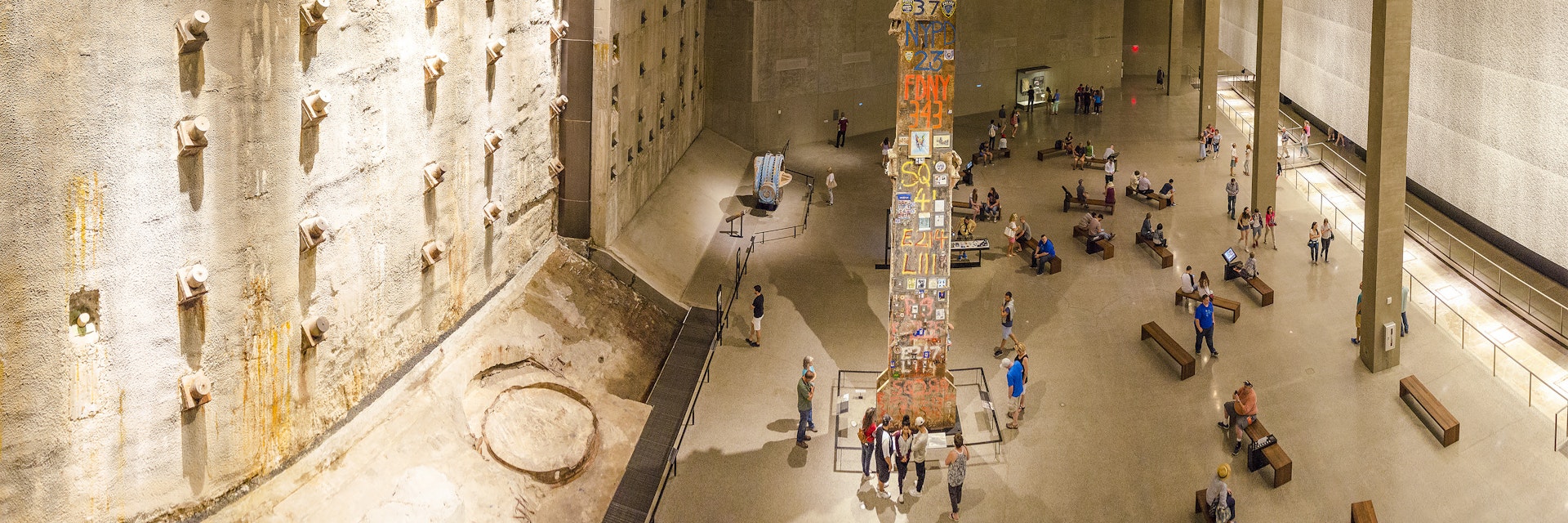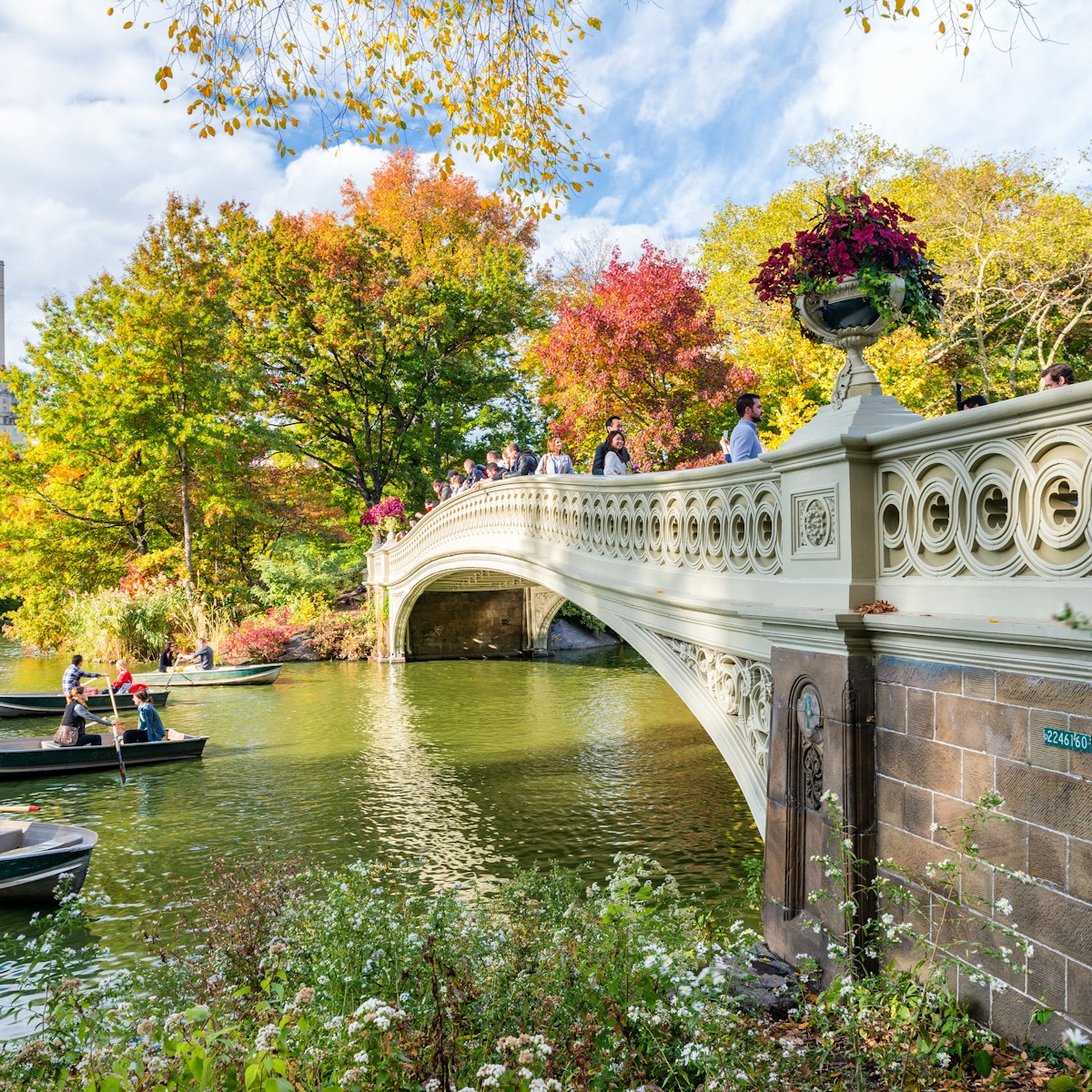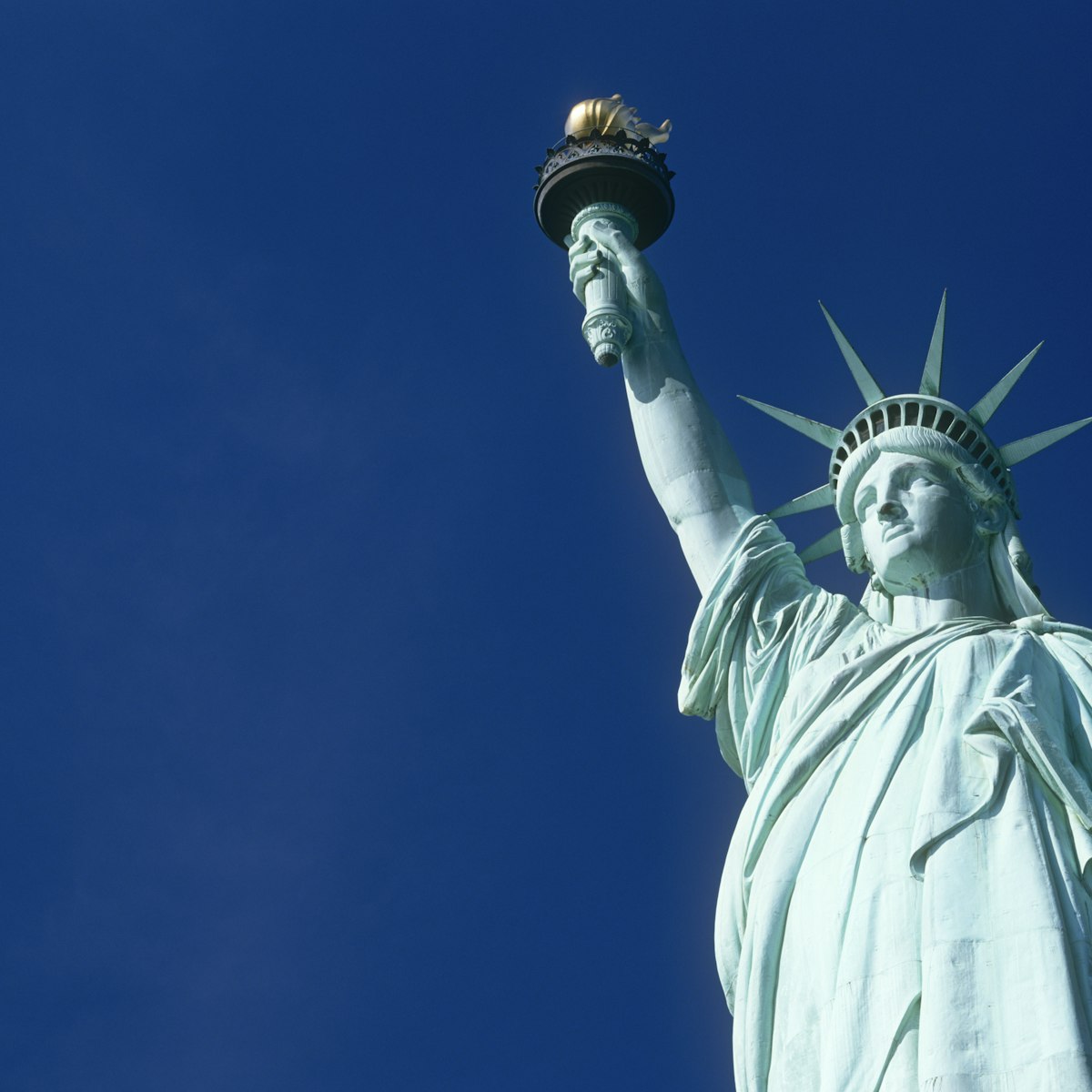When the twin towers of the World Trade Center toppled during the awful events of 11 September 2001, it led to years of soul-searching about what would be an appropriate memorial to replace these lost landmarks. Eventually, New York City opted for subtlety and dignity, and the end result was this humbling museum in Lower Manhattan & the Financial District, flanked by the sombre reflective pools of the adjacent National September 11 Memorial, creating a moving homage to those lost in the tragedy.
Incorporating parts of the site devastated by the collapsing skyscrapers, and remnants of the towers themselves, the museum is architecturally intriguing and deeply poignant. Its collection of artifacts, videos, photographs and audio recordings provide a thought-provoking and reflective exploration of the tragedy, the events that preceded it (including the World Trade Center car bombing of 1993), and the stories of grief, resilience and hope that followed.
Exploring the museum
From the museum's glass entry pavilion – which eerily evokes a toppled tower, in tribute to the tragedy – escalators descend to the museum's subterranean galleries. As they drop below the surface, visitors stand in the shadow of two 70ft-high steel structural tridents, originally embedded in the bedrock at the base of the North Tower to help support the original structure. Looking like giant, rusty forks, these scorched survivors are just two of the many poignant objects that bear silent witness to the devastation of September 11 inside this moving museum.
Another humbling relic is the so-called Survivors' Staircase, used by hundreds of people to flee the WTC site to safety in the narrow time window before the towers collapsed. In the high-ceilinged Foundation Hall stands a single retaining wall that survived the destruction, and the last steel column removed from the clean-up, adorned with messages, missing-person posters and mementos of recovery workers, first responders and loved ones of the victims.
There's also the NYC Fire Department’s Engine 21, its burnt-out cab a harrowing testament to the inferno faced by those at the scene. Perhaps the most haunting exhibition is In Memoriam, its walls lined with the names and photos of the nearly 3000 people who perished. Interactive touch screens and a central reflection room offer more comprehensive information about the victims, recorded by those who knew them best.
The September 11 Memorial
Adjacent to the museum is the National September 11 Memorial itself, centred on the twin pools known as Reflecting Absence, occupying the actual footprints of the ill-fated Twin Towers. From the rims of these two pools, cascades of water pour 30ft down toward a central void. Flanking bronze panels are inscribed with the names of all those lost in the 2001 terrorist attack and the World Trade Center car bombing in 1993. You’ll wander through this peaceful, tree-shaded space to reach the museum.
Just west of the South Pool is the 'Survivor Tree,' a pear tree that miraculously survived the destruction, and nearby is the Oculus, a gleaming white structure inspired by a dove in flight, created by architect and sculptor Santiago Calatrava as the roof for the WTC Transportation Hub. Every year on September 11, the central skylight is opened for exactly 102 minutes, the time from the first attack to the collapse of the second tower.
Rising nearby is the gleaming One World Trade Center, built to replace the toppled towers, with some of New York's best views from the One World Observatory on the upper floors.
History
The design for the memorial and museum to the September 11 tragedy was selected after a national competition, with Israeli-American architect Michael Arad winning the contract with his subtle design for reflecting pools surrounded by a forest of white oak trees to create a low-lying, open space for contemplation on the site formerly occupied by two of New York’s tallest towers. The accompanying museum – designed to give a sense of a building falling – was created by architectural firm Davis Brody Bond, who also designed the National Museum of African American History and Culture in Washington DC.
Construction of New York's tribute to the victims of the 9/11 attacks began in 2006. The memorial officially opened on 12 September 2011, ten years and one day after the September 11 attacks, with the museum opening three years later in 2014. On a sombre note, unidentified human remains from the attacks were interred in a special repository beneath the site in 2014, where they remain under the jurisdiction of the Chief Medical Examiner in the hope that science may one day be able to identify the victims.
Tickets & Practicalities
To minimize queuing, purchase tickets online or at one of the vending machines outside the museum building. Arriving early in the morning is a good idea so you can appreciate the site at its most calm and peaceful. Rotating temporary exhibitions touch on other subjects related to the World Trade Center, such as the Native American ironworkers who helped construct the twin towers or the hunt for Al Qaeda leader Osama Bin Laden.
Hotels near the National September 11 Museum
There are plenty of hotels in Lower Manhattan & the Financial District, but you'll pay a big mark-up for the location.
Frederick Hotel
Club Quarters World Trade Center
AKA Tribeca
Conrad New York












